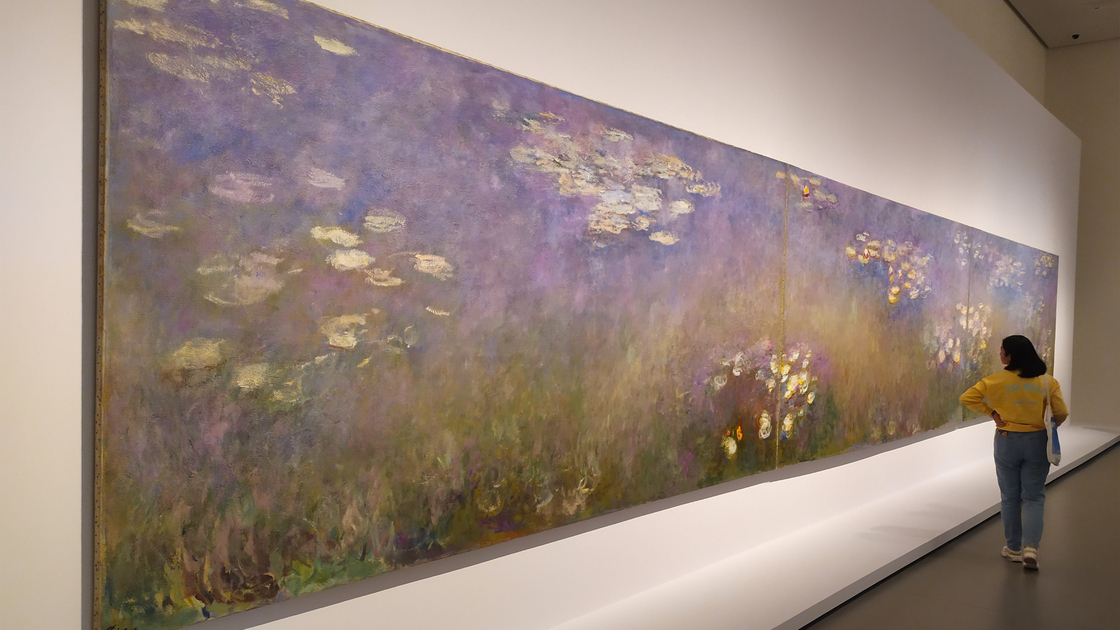Picture this: It is a bright, beautiful summer’s day. The trees above you rustle with the activity of songbirds. You hear the calm wind gently whistling through the leaves. You walk by a pond and find its surface carpeted with blooming waterlilies. To immortalize this moment, you decide to make a painting of the lilies on the water. However, there is one problem: You’re almost completely blind.
This was the obstacle that faced Claude Monet. Born in Paris, France, in 1840, he was a founder of the Impressionist school of art. Impressionism is a style of art that depicts the subjects in semi-realistic manner, but slightly blurry, like an out-of-focus camera. Prominent Impressionists include famous artists like Camille Pissarro, Pierre-Auguste Renoir and Alfred Sisley. But Monet was the superstar of the Impressionists. While some contemporaries of Monet struggled to build their careers, he lived and died a celebrity. It was his painting of a port on the English Channel—Impression, Sunrise—that gave the movement its name.
Impressionism was especially interested in playing with light: the shimmering reflection on a lake, rays filtering through a forest canopy, a burst of sunshine from a window cutting through an otherwise-dark room.
In 1883, Monet followed the light across the country to Giverny, a small town northwest of Paris. At Giverny, he bought a property where he would build his most famous, perennial subject matter: his water garden. Until his death in 1926, Monet would spend hours in his garden, day in, day out, painting the willows, the floral arches and—most well-known—the water lilies. Monet’s Water Lilies set is comprised of roughly 250 paintings.
Years of playing with the light took its toll on Monet, however; the light started to play with him. Long exposure to sunlight gave him cataracts—a disease where the lens of the eye becomes opaque. Cataracts makes a person’s vision look cloudy, as if looking through a frosted window. Cataracts also distort how people perceive certain colors: White becomes yellow, blue becomes red, etc.
The deterioration of Monet’s vision is evident in his paintings. In his iconic painting, The Japanese Footbridge and the Water Lily Pool, Giverny, the colors are relatively realistic. Everything in the scene is bright and verdant. The surface of the pond shimmers with lily pads. This painting was made before cataracts really started to affect Monet’s eyesight.
In contrast, a later painting of the same subject, simply called The Japanese Footbridge, was made after Monet’s vision had significantly deteriorated. Long gone are the bright, “happy” colors. Instead, we get a gritty, muddy palette. Instead of the cheerful greens, we get abstract yellows and twisted reds. The bridge itself is almost unrecognizable.
In 1922, Monet was diagnosed as being completely blind in one eye, with the other having only 10 percent vision. “I am painting,” he wrote in a letter, “by relying on the labels on the tubes of paint and on the force of habit.”
Losing vision is a trial for anyone, let alone an artist. It discouraged Monet greatly, but he kept on painting. He would not let his disability hinder his work. He continued painting up to the end of his life at age 86 in 1926. And it was in his twilight years when he accomplished one of his greatest masterpieces.
Following France’s victory in World War i in 1918, Monet promised the French government a monument of peace for the French people. His goal was several massive canvases of his Water Lilies set as a gift to the nation. He would attempt this despite his bad eyesight. (He did eventually undergo eye surgery which removed some of his difficulty, but it did not restore his vision to the point where he could see normally.)
What were the result of Monet’s labors? Eight gigantic, exquisite canvases displaying the beautiful landscape of his water garden. You can recognize the sparkling water, the easily discernible flora, the drooping branches of a weeping willow. Today, these paintings hang permanently in the Orangery Museum in Paris. They were first displayed in 1927—a few months after Monet had died.
Monet was an old man nearing blindness at this point. Yet he refused to let circumstances stop him from getting his work—arguably his greatest work—done. He applied what Herbert W. Armstrong labeled in The Seven Laws of Success as the sixth law: perseverance.
Claude Monet died almost 100 years ago. But his story teaches us a lesson we can apply in our own lives today.
Like Monet, we’re handicapped. We’re physical beings called to a spiritual war (Ephesians 6:12)—to face off against the god of this world (2 Corinthians 4:4). We have a Work to get done. But perhaps we have even more literal handicaps that we see as a weight holding us back. Perhaps we have health problems that stop us from taking part in important activities. Perhaps we don’t think we make enough money to give pleasing offerings. Perhaps we think we’re not smart enough to really succeed at Herbert W. Armstrong College.
Perhaps, like a blind artist, we may feel we’re just not cut out for the job we’ve been called to do.
Monet’s Orangery set, still admired by people from around the world, are testimony that this isn’t so. Like Monet, regardless of what we think is holding us back, our greatest works—whether collectively as a Church, or individually as a Christian trying to navigate this hostile world—lay yet ahead.
Monet was a successful artist. But his accomplishments pale in comparison to what we have been called to achieve: finishing God’s Work. If we persevere and have eyes to see the victory He promises us if we do our part, then we can be a success in life. We can overcome our obstacles—even seemingly impossible ones. We can finish our divinely appointed job—our collective spiritual masterpiece—and reap the rewards in the Kingdom of God for all eternity.
